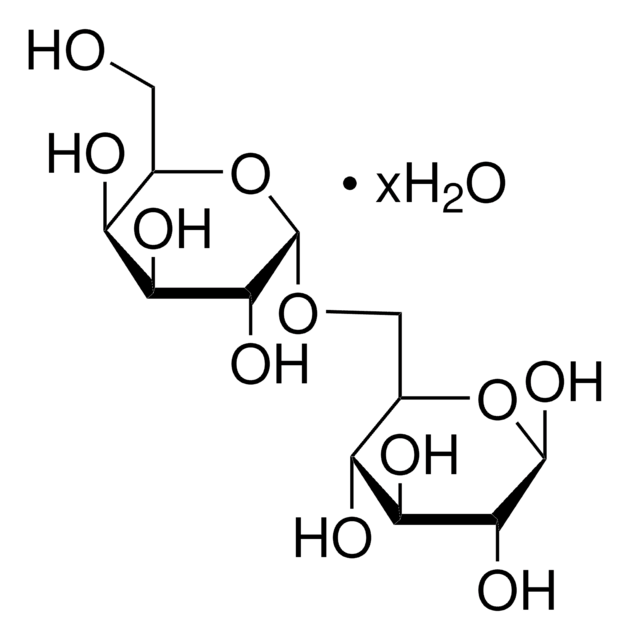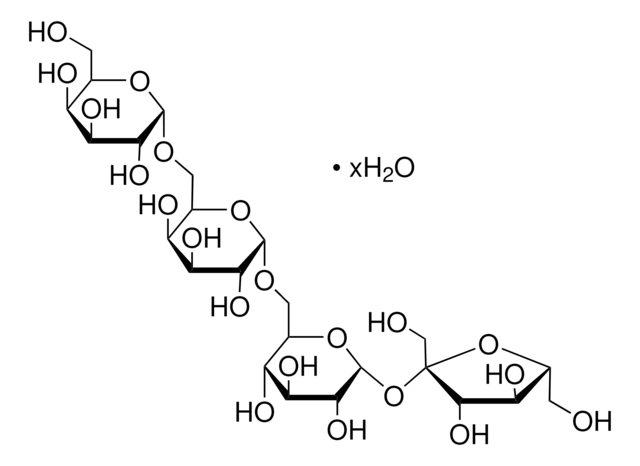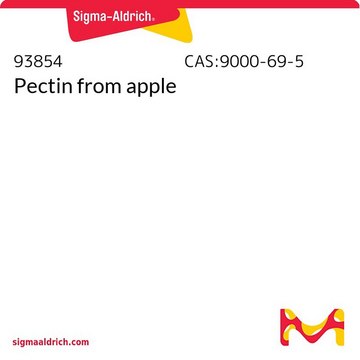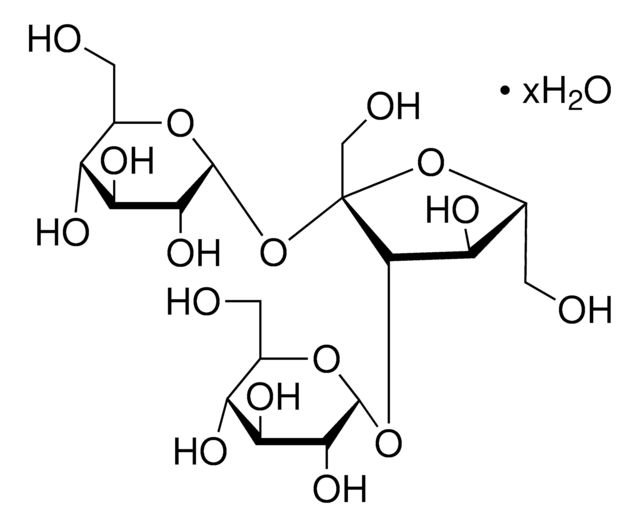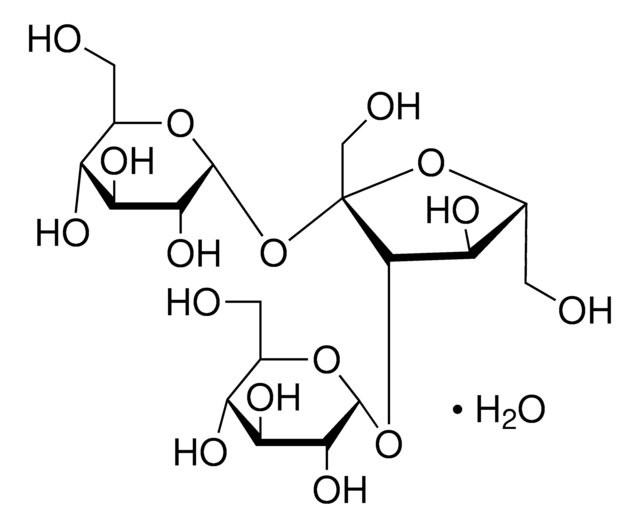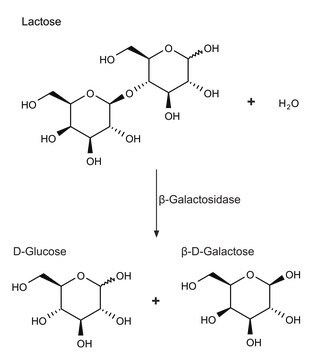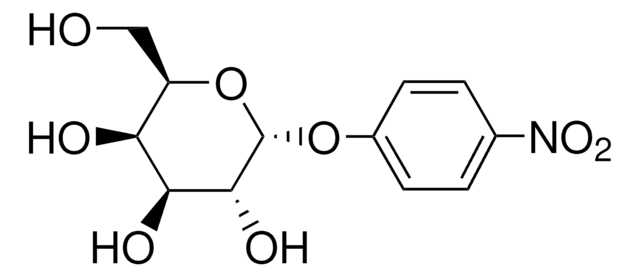63630
D-(+)-Melibiose
suitable for microbiology, ≥99.0%
Sinônimo(s):
Raffinose, Melizitose, α-D-Galactosyl-(1→6)-α-D-glucopyranoside, Galactosyl D-glucose, Galactosylglucose, D-Galactopyranosyl-(1→6)-D-glucose, Melibiose, Galactinol, D-(+)-Galactosyl-(1→6)-D-(+)-glucose, α-D-Gal(1→6)β-D-Glc, 6-O-α-D-Galactopyranosyl-D-glucose
About This Item
Produtos recomendados
Nível de qualidade
Ensaio
≥99.0% (HPLC)
≥99.0%
forma
powder
atividade óptica
[α]20/D +137±3°, 10 hr, c = 5% in H2O
embalagem
pkg of 10 g
pkg of 50 g
resíduo de ignição
≤0.1% (as SO4)
cor
colorless to white
solubilidade
H2O: 0.1 g/mL, clear, colorless
traços de ânion
chloride (Cl-): ≤50 mg/kg
sulfate (SO42-): ≤200 mg/kg
traços de cátion
As: ≤0.1 mg/kg
Ca: ≤500 mg/kg
Cd: ≤5 mg/kg
Co: ≤5 mg/kg
Cr: ≤5 mg/kg
Cu: ≤5 mg/kg
Fe: ≤10 mg/kg
K: ≤50 mg/kg
Mg: ≤10 mg/kg
Mn: ≤5 mg/kg
Na: ≤50 mg/kg
Ni: ≤5 mg/kg
Pb: ≤5 mg/kg
Zn: ≤5 mg/kg
aplicação(ões)
microbiology
cadeia de caracteres SMILES
OC[C@H]1O[C@H](OC[C@@H](O)[C@@H](O)[C@H](O)[C@@H](O)C=O)[C@H](O)[C@@H](O)[C@H]1O
InChI
1S/C12H22O11/c13-1-4(15)7(17)8(18)5(16)3-22-12-11(21)10(20)9(19)6(2-14)23-12/h1,4-12,14-21H,2-3H2/t4-,5+,6+,7+,8+,9-,10-,11+,12-/m0/s1
chave InChI
AYRXSINWFIIFAE-GFRRCQKTSA-N
Procurando produtos similares? Visita Guia de comparação de produtos
Categorias relacionadas
Descrição geral
Aplicação
Armazenamento e estabilidade
Código de classe de armazenamento
11 - Combustible Solids
Classe de risco de água (WGK)
WGK 3
Ponto de fulgor (°F)
Not applicable
Ponto de fulgor (°C)
Not applicable
Equipamento de proteção individual
Eyeshields, Gloves, type N95 (US)
Escolha uma das versões mais recentes:
Já possui este produto?
Encontre a documentação dos produtos que você adquiriu recentemente na biblioteca de documentos.
Os clientes também visualizaram
Nossa equipe de cientistas tem experiência em todas as áreas de pesquisa, incluindo Life Sciences, ciência de materiais, síntese química, cromatografia, química analítica e muitas outras.
Entre em contato com a assistência técnica